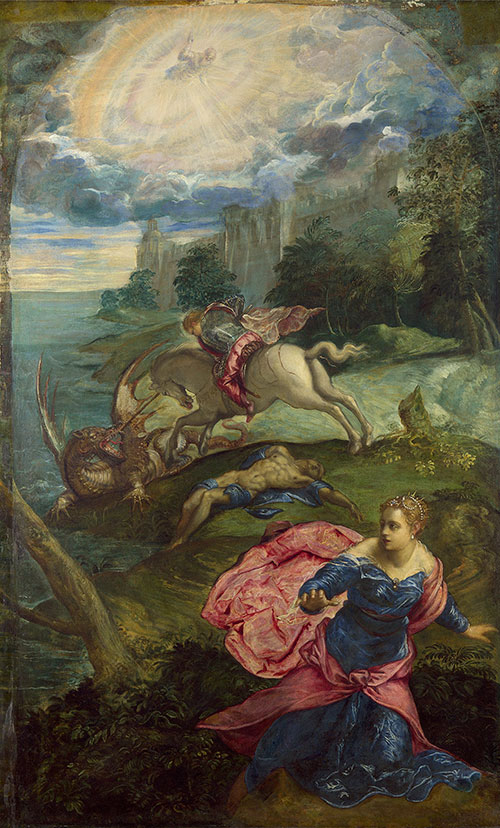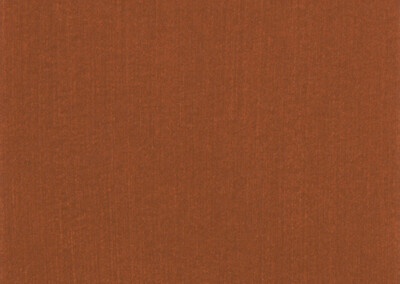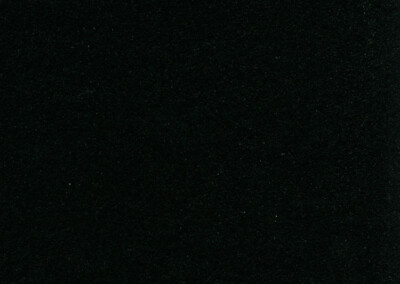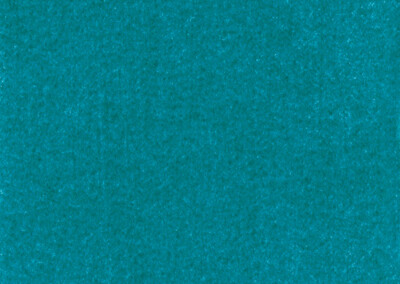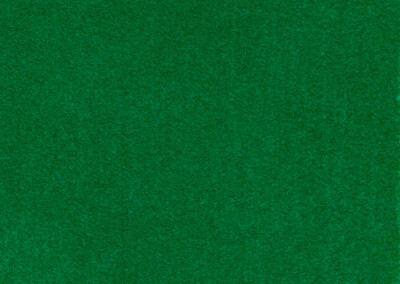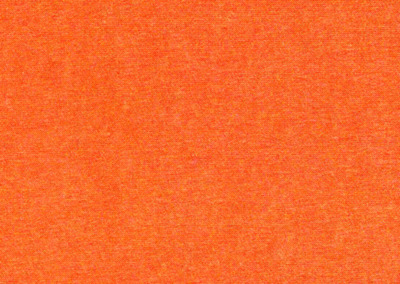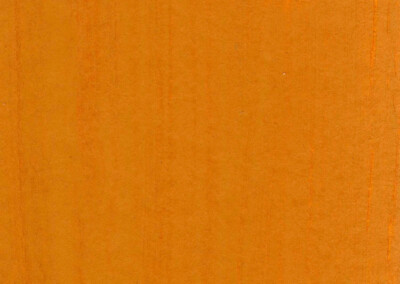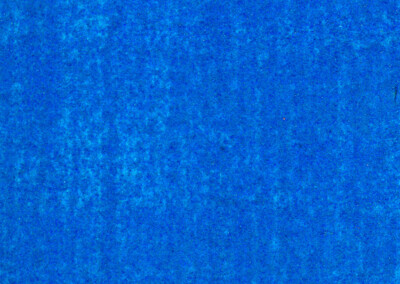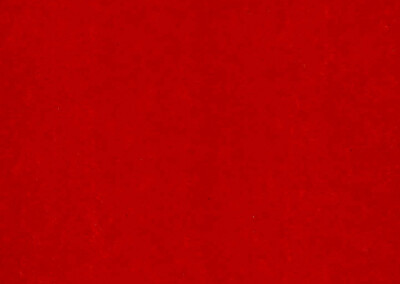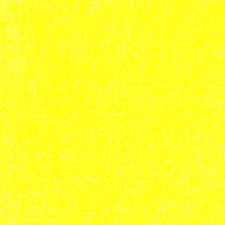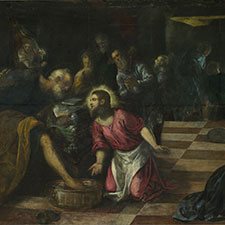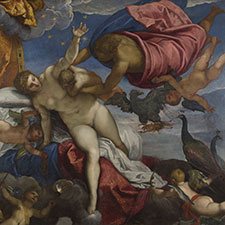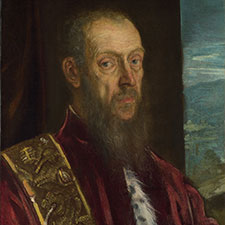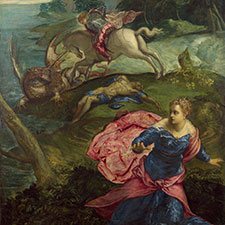Jacopo Tintoretto, Saint George and the Dragon
ca 1555Jacopo Tintoretto, Saint George and the Dragon
ca 1555Paintings sorted by Historical period | Painter | Subject matter | Pigments used
Overview
Date: about 1555
Medium: Oil
Support: Canvas
Size: 158.3 x 100.5 cm
Art period: Late Renaissance (Mannerism)
National Gallery London
Inventory number: NG16
The ancient legend of Saint George slaying the dragon and rescuing the Princess just about to be sacrificed to the monster has been depicted in a multitude of paintings. The usual composition pattern of all these paintings is putting St George’s fight with the dragon in the center and relegating the princess passively awaiting her destiny to the background (see below and also the “Related paintings” for examples).
Related Paintings
Raphael, St George and the Dragon, ca 1506
National Gallery of Art Washington

Peter Paul Rubens, St George and the Dragon, 1606-08
Museo del Prado Madrid
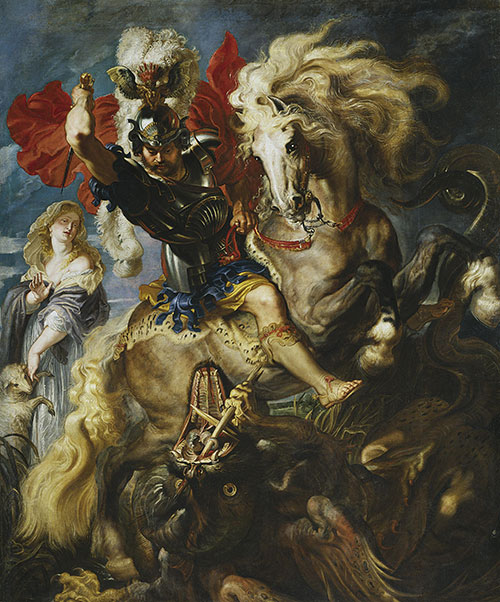
Pigments
Pigment Analysis
The following pigment analysis is based on the technical examination of the painting in the National Gallery London (1, 2, and 3). The following pigments were identified in addition to charcoal black, brown ochre, yellow ochre, and red ochre.
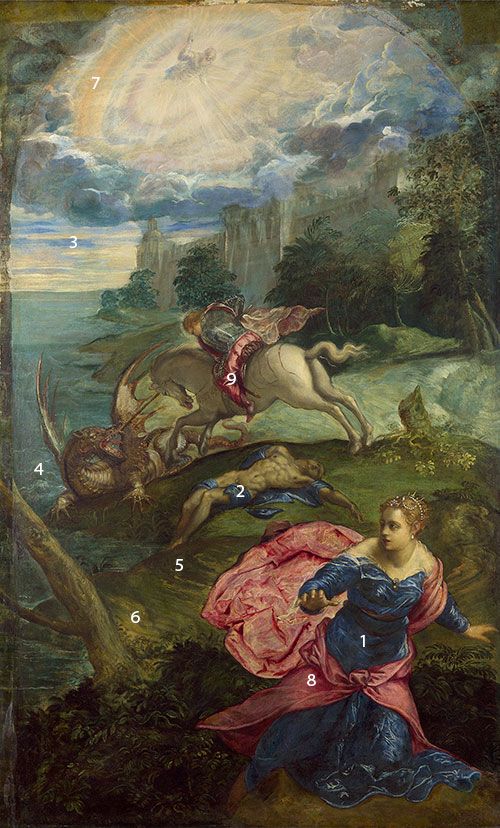
1 Blue dress of the Princess, 2 blue drapery of the corpse, and 3 blue parts of the sky: natural ultramarine mixed with lead white in lighter areas and pure in the darker areas.
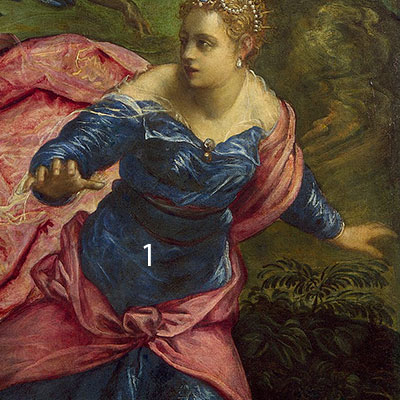

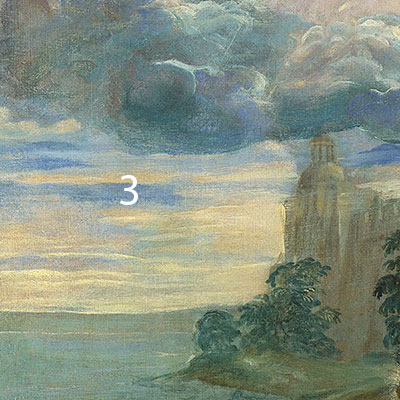
4 Bluish parts of the sea: azurite and lead white.
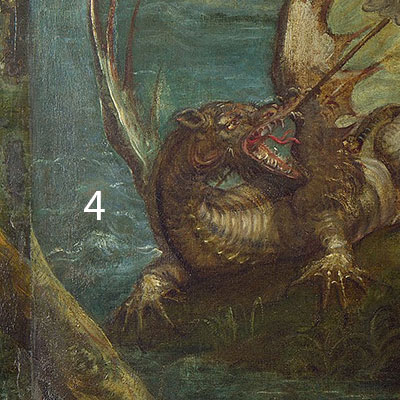
5 Green landscape: malachite and smaller amounts of verdigris.
6 Yellow-green parts of the landscape: malachite with smaller amounts of verdigris mixed with lead-tin-yellow.

7 Orange mandorla (the halo around the whole figure) around God the Father: lead-tin-yellow with small amounts of vermilion.
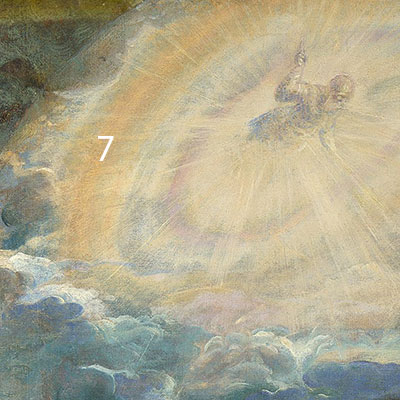
8 Red cloak of the Princess and 9 red costume of St George: red lake.
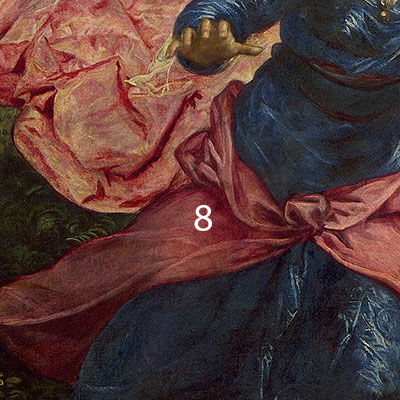
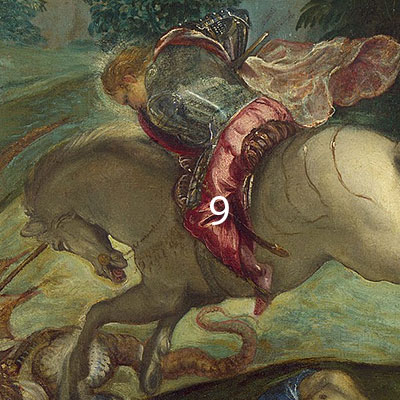
References
(1) Dunkerton, J. ‘Tintoretto’s Underdrawing for “Saint George and the Dragon“‘. National Gallery Technical Bulletin Vol 28, pp 26–35.
(2) Plesters, J. ‘Tintoretto’s Paintings in the National Gallery: Part I‘. National Gallery Technical Bulletin Vol 3, pp 3–24.
(3) Plesters, J. ‘Tintoretto’s Paintings in the National Gallery: Part II‘. National Gallery Technical Bulletin Vol 4, pp 32–48
Pigments Used in This Painting
Resources
Videos
Video: 'Tintoretto, Saint George and the Dragon' by National Gallery London
Publications and Websites
Publications
(1) Dunkerton, J. ‘Tintoretto’s Underdrawing for “Saint George and the Dragon“‘. National Gallery Technical Bulletin Vol 28, pp 26–35.
(2) Plesters, J. ‘Tintoretto’s Paintings in the National Gallery: Part I‘. National Gallery Technical Bulletin Vol 3, pp 3–24.
(3) Plesters, J. ‘Tintoretto’s Paintings in the National Gallery: Part II‘. National Gallery Technical Bulletin Vol 4, pp 32–48

